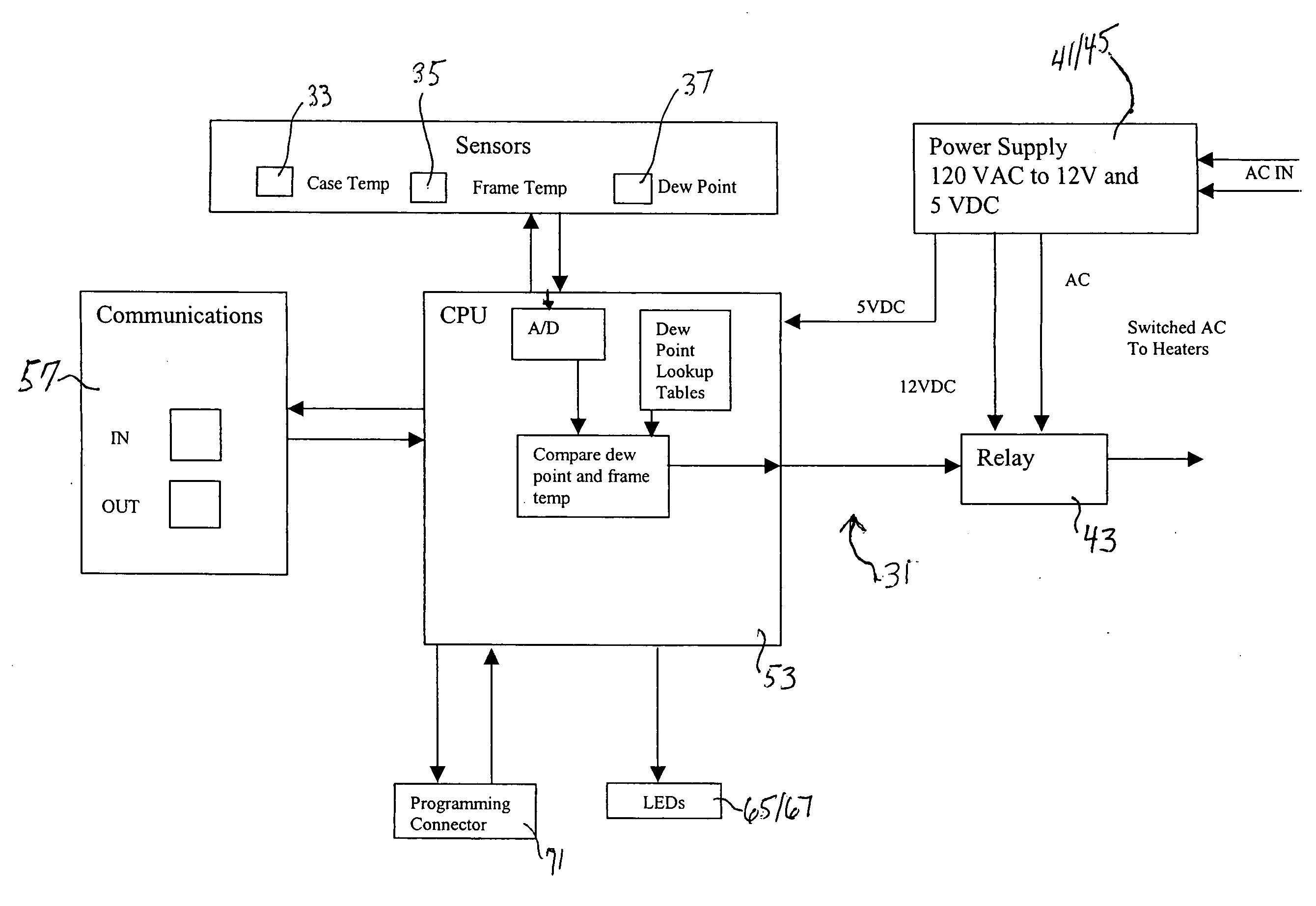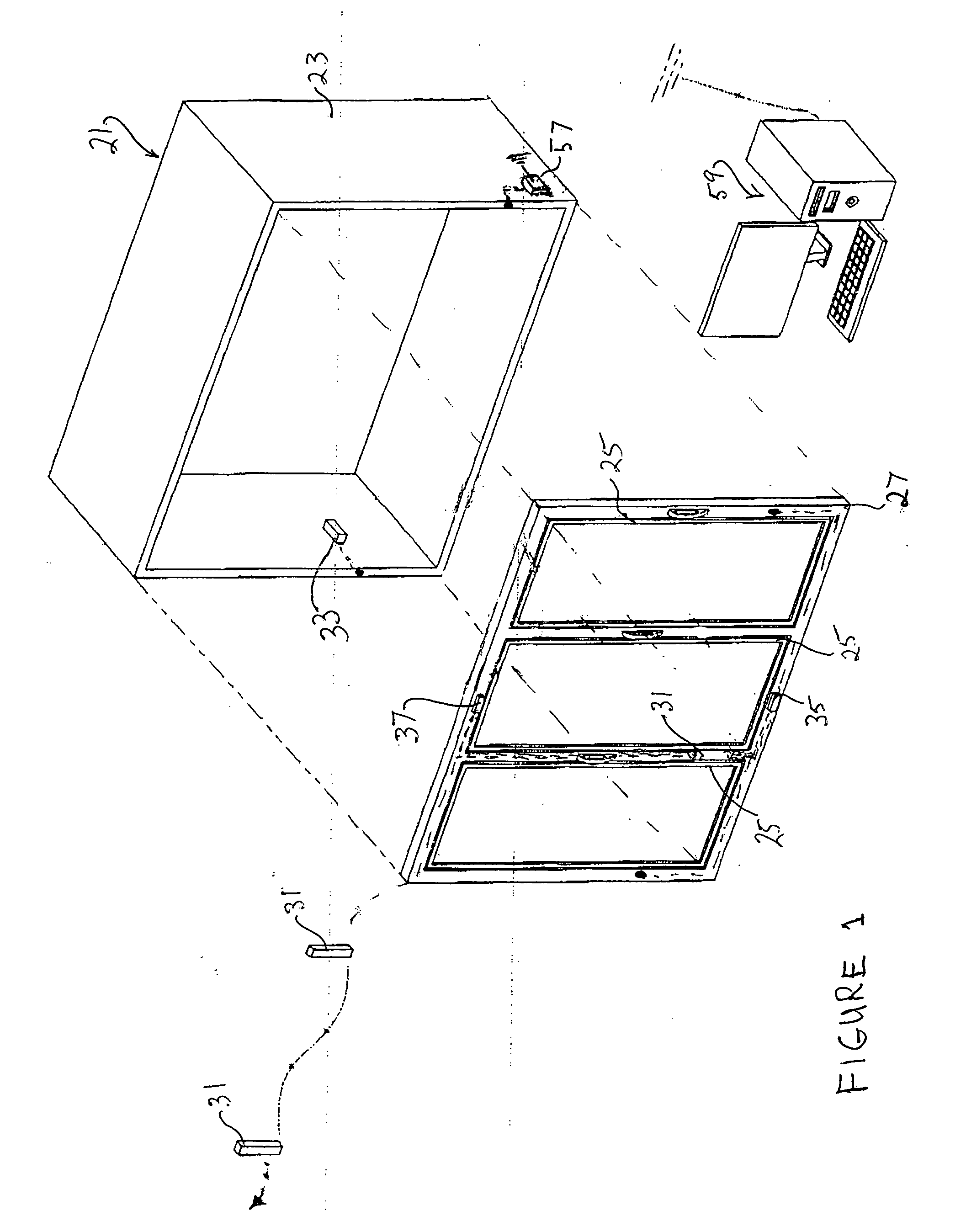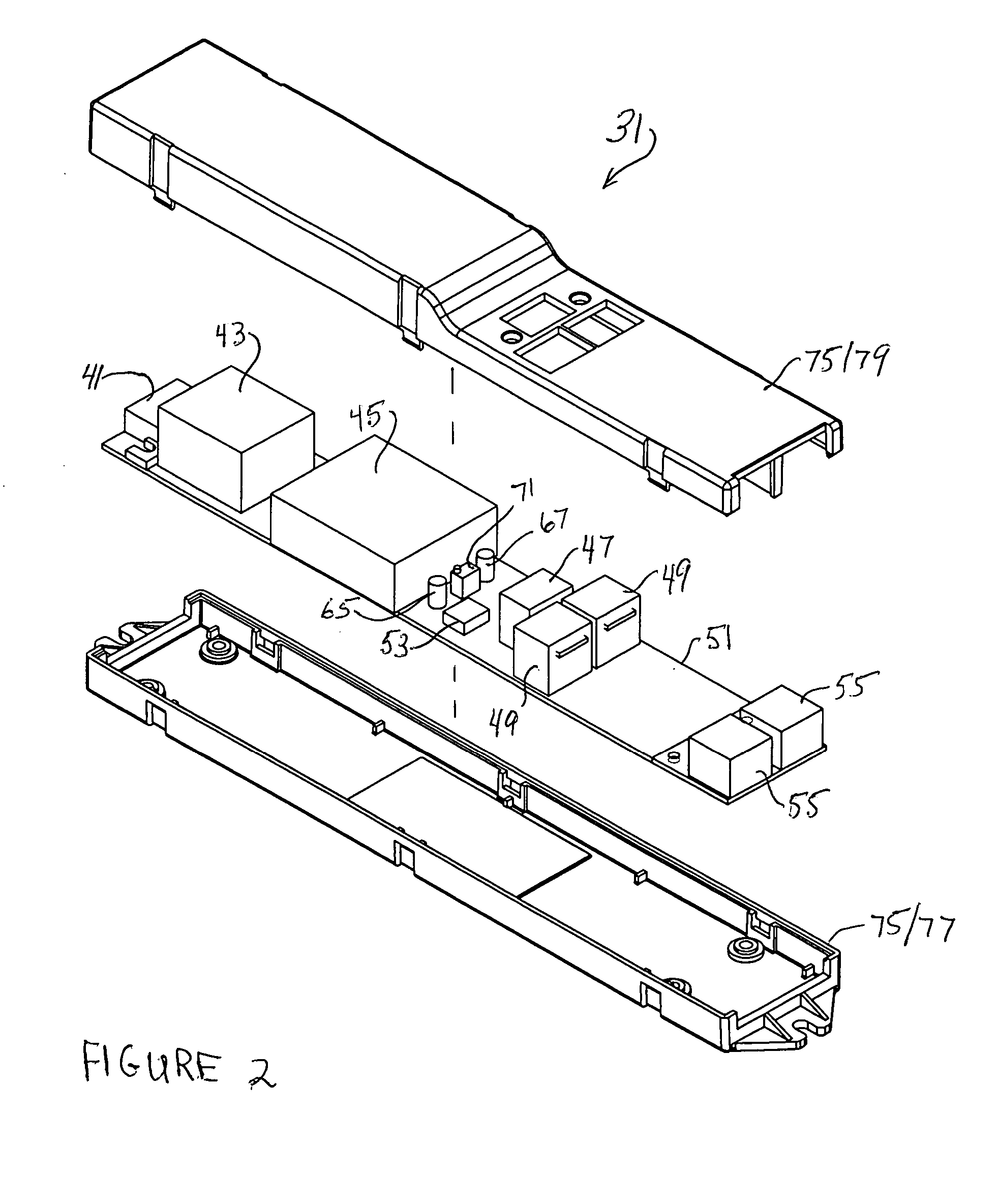Refrigeration unit condensation prevention
a refrigeration unit and condensation prevention technology, applied in the field of frame and/or door heating, can solve the problems of causing correspondingly high energy costs, affecting the efficiency of refrigeration units, so as to prevent condensation from forming, reduce energy consumption, and eliminate door and frame condensation.
- Summary
- Abstract
- Description
- Claims
- Application Information
AI Technical Summary
Benefits of technology
Problems solved by technology
Method used
Image
Examples
Embodiment Construction
[0035] The system of this invention is illustrated in FIG. 1 in association with a common commercial freezer / cooler display unit 21 including a display container 23 having a frame (not shown in this FIGURE) and doors 25 in frame 27 (hereinafter, refrigeration case(s)). Up to fifteen such cases 21 can be served by the system as currently configured (though greater or fewer cases could be accommodated). Each case 21 is provided with a local controller unit 31 connected with an array of case sensors including internal case temperature sensor 33, external case frame temperature sensor 35 and dew point sensor 37. The array of sensors may be hard wired (as shown herein) to unit 31 at each case 21 through frame members, or may be configured to function wirelessly utilizing known technologies. While separate frame temperature and dew point sensors 35 and 37 are shown in this FIGURE, an alternate configuration that combines both sensors into one housing is shown hereinafter. Sensor mounting ...
PUM
 Login to View More
Login to View More Abstract
Description
Claims
Application Information
 Login to View More
Login to View More - R&D
- Intellectual Property
- Life Sciences
- Materials
- Tech Scout
- Unparalleled Data Quality
- Higher Quality Content
- 60% Fewer Hallucinations
Browse by: Latest US Patents, China's latest patents, Technical Efficacy Thesaurus, Application Domain, Technology Topic, Popular Technical Reports.
© 2025 PatSnap. All rights reserved.Legal|Privacy policy|Modern Slavery Act Transparency Statement|Sitemap|About US| Contact US: help@patsnap.com



